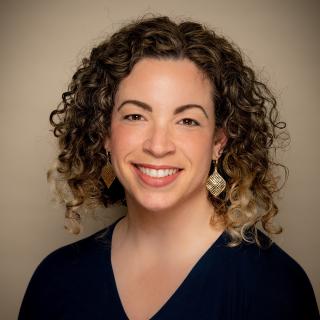 Eight years old. The age of my eldest daughter. The age of spunk, silliness, curiosity, bravery.
Eight years old. The age of my eldest daughter. The age of spunk, silliness, curiosity, bravery.
Eight. The age of reason — when they play sports but don’t angst over defeat; when they’ll still dance in front of anyone; when they hold hands with friends, tell you what they feel, shout their ambitions to the world.
Eight.
The age when girls’ dreams begin to die.
Did you know that girls’ leadership aspirations peak at age 8? This is what I heard at this week's impactful Women's Funding Alliance panel discussion called “Modern Girlhood Redefined.”
After that, the realities of our culture start closing in: Girls lose self-confidence, lack mentors, struggle to find their voice, are susceptible to gender stereotypes and media marginalization, take a back seat in STEM classes, are afraid to raise their hands.
Only one fifth of girls think they have what it takes to be a leader, the experts tell us.
I see my own strong, powerful daughter, on the cusp. When will it happen, this loss of possibility? Next month? Next time she doesn’t know the answer in class? The next time she goes shopping and sees the myriad toys and clothes and junk marketed to her and thinks, ‘Oh yeah, I see what I’m supposed to be.’”
When will my daughter decide she can’t be president, or serve in the United Nations, or speak out against something she feels is wrong? Will it happen tomorrow?
Happy International Day of the Girl.
The clock is ticking.
Which is why as mothers, fathers, teachers, community members, we need to take action.
“If we don’t want to hand girlhood over to Mattel, Disney, Tumblr, what is it” we will do? asked Liz Vivian, Executive Director at Women's Funding Alliance.
It won’t be easy. We need to pay attention, closer attention perhaps than we’ve ever paid before.
To the toys we hand over to our toddlers, the pinky-pink and narrow-minded toys that lay the foundation for our girls’ perceptions of their place in the world (and our boys’, too).
To the media-perpetuated falsehoods about what beauty, power, femininity and masculinity mean.
 To the high percentage of girls among us who live in poverty and are at the most risk to be overlooked, violated, invisible, left behind.
To the high percentage of girls among us who live in poverty and are at the most risk to be overlooked, violated, invisible, left behind.
To the dangers of physical and sexual abuse facing girls and women.
Overwhelming, isn’t it? And nebulous. So what is there to do?
Some ideas and inspiration from the Modern Girlhood panel heroines:
Inspire learning, and a sense of self-confidence by modeling it to our own children and the girls around us, said Erin Jones, nationally recognized educator and Director of Equity and Achievement in the Federal Way School District. “I am me, I am enough,” Jones said of her own motto in life. She told the audience the riveting story of how, as the adopted African American daughter of a white couple, she spent years straightening her (incredibly gorgeous) curly hair in order to fall into line with the mainstream beauty model. I could so relate: I have a head of unruly kink that I straightened every day until I was 30 and realized, like Jones (now sporting a big and beautiful kinktastic crown of glory), that I wanted to be my own self. Self-love is a gift we can uniquely give our daughters.
Beware the last girl. Nan Stoops, Executive Director of the Washington State Coalition Against Domestic Violence, spoke about the concept of “the last girl.” This is the view of the world where we realize that as women and mothers we are responsible for lifting all girls up, and that we must measure our success by the impact on the last girl — the metaphorical girl who is the most invisible, the most violated, the most at-risk among us — and ask, have we done enough so the last girl will also benefit? This speaks to mentoring, and modeling, and going beyond our own families and privileges to help advance the world for all girls.
Take girls seriously. Girls are still in danger and at risk, and we need to confront that and address it, urged Jessica Willis, faculty member of Women’s and Gender Studies at Eastern Washington University and the author of The Making of Modern Girlhood. “Many, many women and girls still live in fear,” in large part of physical and sexual threat and assault, she said. I was reminded of this the other night, walking late through downtown Seattle with my 8-year-old girl, on our way from a theater where we saw a show to the parking garage several blocks away. It was dark, the sidewalk was quiet, but there were a few men out, some walking confidently, or talking on phones or to themselves, one behaving erratically, and my daughter grasped my hand more tightly and I sensed, for maybe the first time, that she was afraid in the way all of us women know we’ve been afraid before. Take this seriously, because it impacts everything else.
Help them (literally) make something. “When you make it, it changes how you see the world,” said Robin Held, Executive Director of Reel Grrls, of pursuing a creative idea into fruition. This reminds me that we need to give our girls permission to express themselves, to pursue their interests — whatever those are — and to actively help them access outlets to give their voice wings. In their successful work, girls can get a crucial peek at the vision of their potential future selves.
We can all take these actions with the above-named organizations, in our own families and communities, and more (and more!). Let's keep the conversation going.
 In between school drop-offs and coffee binges, Natalie Singer-Velush is ParentMap’s Managing Editor. In her former life she wrote for newspapers and once pumped milk in the bathroom of the King County Superior Courthouse while covering a murder trial. Natalie lives in Seattle with her husband and their two school-aged daughters, who as of today still want their voices heard.
In between school drop-offs and coffee binges, Natalie Singer-Velush is ParentMap’s Managing Editor. In her former life she wrote for newspapers and once pumped milk in the bathroom of the King County Superior Courthouse while covering a murder trial. Natalie lives in Seattle with her husband and their two school-aged daughters, who as of today still want their voices heard.











